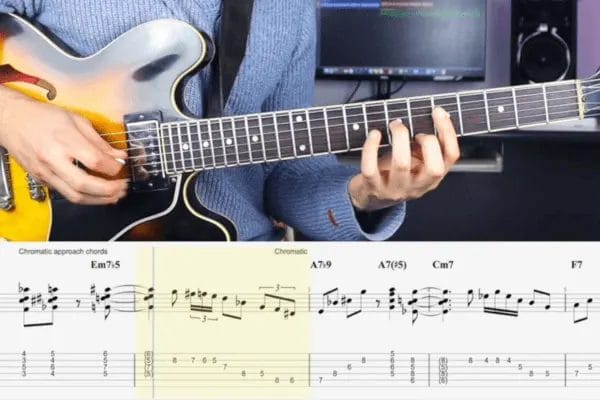Intervallic Approaches to Scales and Arpeggios
Intervallic Perspective what is it and how it can help you?
As a guitar player, one way to approach playing scales and arpeggios is to consider them in an intervallic perspective. This means looking at the relationships between the notes in the scale or arpeggio, rather than just playing the individual notes. By doing this, you can create interesting and unique sounds on the guitar that go beyond just playing the individual notes of a scale.
One way to approach scales and arpeggios in an intervallic perspective is by using intervals. An interval is the distance between two notes, and it can be measured in half steps. There are many different types of intervals, including major and minor intervals, which are determined by the number of half steps between the two notes. For example, you can play a scale using the interval of a second, or the distance between two adjacent notes, or the interval of a sixth or seventh, which are a little more complex.
Using intervals in your playing can give you a lot of flexibility and creativity, as you can create different structures and patterns within a scale or arpeggio. For example, you can play a scale using only the interval of a second, or you can use a combination of different intervals to create more complex structures. By doing this, you can add more depth and interest to your playing, and create a more musical and expressive sound on the guitar.
Another way to expand on this concept is by incorporating different modes into your playing. Modes are variations of the major scale that have a distinct character and sound. For example, the lydian mode is a mode of the major scale that has a bright and uplifting sound, while the phrygian mode has a more dark and mysterious sound. By learning and incorporating different modes into your playing, you can add even more depth and variety to the sounds you create on the guitar.

Overall, approaching scales and arpeggios in an intervallic perspective can help you create more interesting and unique sounds on the guitar, and allow you to tell a musical story through your playing. By using intervals and incorporating different modes, you can take your guitar playing to the next level and express yourself in a more musical and creative way.
- Approach scales and arpeggios in an intervallic perspective to create unique sounds on the guitar
- Use intervals, such as seconds, sixths, and sevenths, to create different structures and patterns within a scale or arpeggio
- Incorporate different modes, such as lydian and phrygian, to add depth and variety to your playing
- Intervallic approaches can help you create more musical and expressive sounds on the guitar
- Use these approaches to take your guitar playing to the next level and tell a musical story through your playing





















